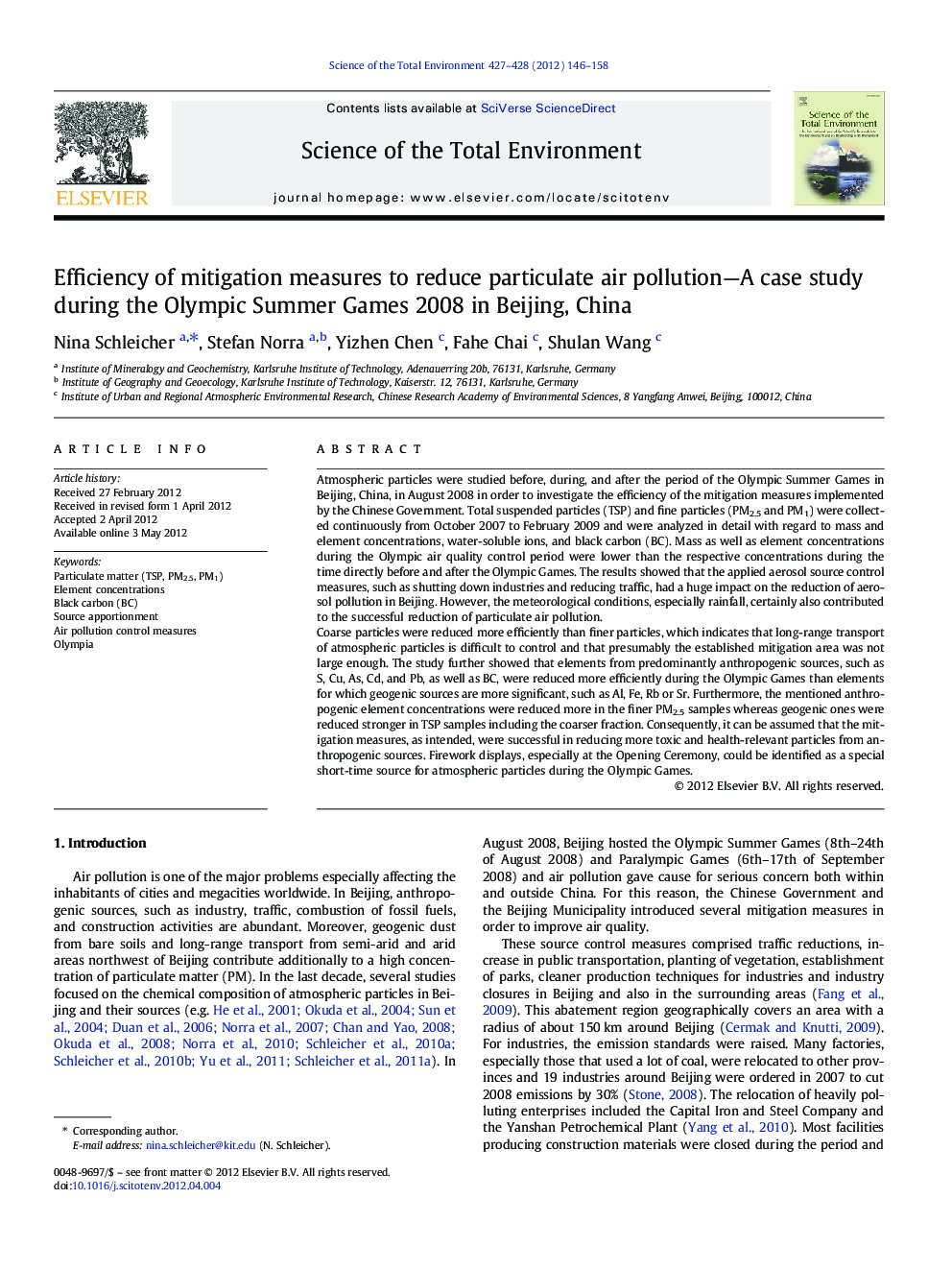| Article ID | Journal | Published Year | Pages | File Type |
|---|---|---|---|---|
| 4429418 | Science of The Total Environment | 2012 | 13 Pages |
Atmospheric particles were studied before, during, and after the period of the Olympic Summer Games in Beijing, China, in August 2008 in order to investigate the efficiency of the mitigation measures implemented by the Chinese Government. Total suspended particles (TSP) and fine particles (PM2.5 and PM1) were collected continuously from October 2007 to February 2009 and were analyzed in detail with regard to mass and element concentrations, water-soluble ions, and black carbon (BC). Mass as well as element concentrations during the Olympic air quality control period were lower than the respective concentrations during the time directly before and after the Olympic Games. The results showed that the applied aerosol source control measures, such as shutting down industries and reducing traffic, had a huge impact on the reduction of aerosol pollution in Beijing. However, the meteorological conditions, especially rainfall, certainly also contributed to the successful reduction of particulate air pollution.Coarse particles were reduced more efficiently than finer particles, which indicates that long-range transport of atmospheric particles is difficult to control and that presumably the established mitigation area was not large enough. The study further showed that elements from predominantly anthropogenic sources, such as S, Cu, As, Cd, and Pb, as well as BC, were reduced more efficiently during the Olympic Games than elements for which geogenic sources are more significant, such as Al, Fe, Rb or Sr. Furthermore, the mentioned anthropogenic element concentrations were reduced more in the finer PM2.5 samples whereas geogenic ones were reduced stronger in TSP samples including the coarser fraction. Consequently, it can be assumed that the mitigation measures, as intended, were successful in reducing more toxic and health-relevant particles from anthropogenic sources. Firework displays, especially at the Opening Ceremony, could be identified as a special short-time source for atmospheric particles during the Olympic Games.
► Effects of mitigation measures during the Olympic Games 2008 in Beijing were studied. ► Atmospheric particles were analyzed for element, water-soluble ion, and BC concentrations. ► Concentrations decreased due to the implemented measures and meteorological conditions. ► Finer particles were reduced less compared to coarser fractions due to long-range transport. ► In the fine fraction anthropogenic elements were reduced more than those from geogenic sources.
